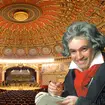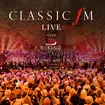Bach - Cello Suites
J. S. Bach composed his Six Suites for Unaccompanied Cello between 1717–23, based on six dance movements
It's likely Bach wrote his Cello Suites between 1717-23 when he was serving as Kapellmeister in Köthen, along with his other famous secular triumphs including the Brandenburg Concertos and the Well-Tempered Clavier. They are, without a doubt, some of the most emotionally intense pieces in the Baroque repertoire, making the most of the emotional depth of a solo cello and using a wide range of complex playing techniques.
There are six suites in all, each with six movements, each of which acts like a musical conversation – high passages are echoed by reflective low playing, and dense chords accompany delicate ornamental flourishes. The most famous movement, the 'Prelude' from Suite No. 1 in G, is a great example of Bach's genius; there's no accompaniment, but the harmony plays out note-by-note like a musical journey, as chords are implied over the course of a bar rather than played.
There are no surviving manuscripts in Bach’s own hand, so musicians have relied on a copy written out by his second wife, Anna Magdalena. Her role as a scribe has even led some musical historians to paint her as a sort of Bacon to Bach’s Shakespeare, with the suggestion that she actually wrote many of the suites herself. It's perhaps more astounding that these amazing works weren't widely known before the 1900s, and were merely dismissed as studies.




























